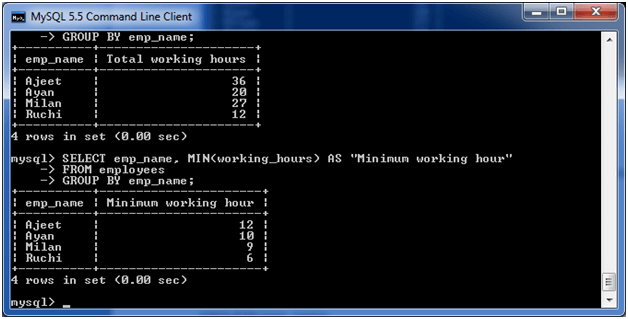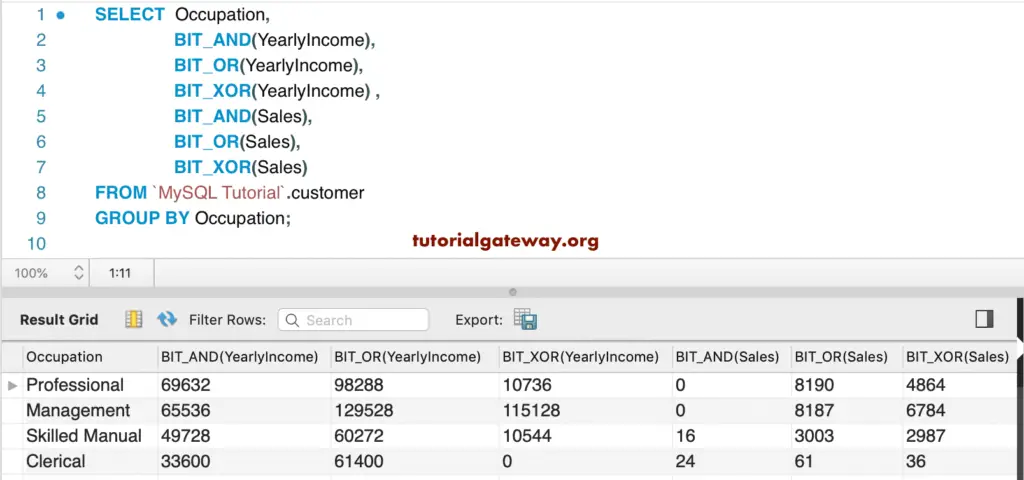

The GROUP BY clause is useful when you want to: Make calculations and aggregations on subsets of data. It is often used in combination with aggregate functions like COUNT (), SUM (), AVG (), MAX (), and MIN () to perform calculations on grouped data. Optional second argument for passing options:* cancel: if true, cancel query if timeout is reached. 28 Simple: I would like to count the number of rows from the sub-query. GROUP BY is an SQL clause that groups rows based on one or more column values. Your queries are very different: The first: select count (distinct accountid) from FactCustomerAccount f join DimDate d on f.dateid d.datekey.

Useful for complex queries that you want to make sure are not taking too long to execute.

The error contains information about the query, bindings, and the timeout that was set. GROUP BY then collapses the rows in each group, keeping only the value of the column JobTitle and the count. Then the COUNT () function counts the rows in each group. GROUP BY puts the rows for employees with the same job title into one group.
Using SQL DISTINCT to view and aggregate unique values in a given column. This example works the same way as our initial query. Sets a timeout for the query and will throw a TimeoutError if the timeout is exceeded. Using SQL COUNT to count the number of rows in a particular column. MySQL GROUP BY Count is a MySQL query responsible for showing the grouping of rows on the basis of column values along with the aggregate function Count. If you don't want to manually specify the result type, it is recommended to always use the type of last value of the chain and assign result of any future chain continuation to a separate variable (which will have a different type). MySQL: Columns to Rows Mysql: select rows with MAX(Column value), DISTINCT by another column MySQL : Change Datatype of a Column ROWNUMBER() in MySQL.
Mysql count distinct group by how to#
How to Count Distinct with Group By and the entire Column. SQL distinct elements count in a group by same element. The SQLs I tried: SELECT, COUNT( score ) AS totalScore FROM table GROUP BY type and. MySQL Group By Multiple Columns MySQL Group By Where Clause MySQL Group By Count Single Column MySQL Group By Order By Example Group By Aggregate Functions. You may use the table method provided by the DB facade to begin a query.Knex ( 'users' ). I tried both DISTINCT and GROUP BY by neither seemed to work. Something like: SELECT COUNT () FROM (SELECT FROM table GROUP BY column1) AS a. If you wish to get the count of rows in a query that includes group by, use it as a subquery instead. Therefore, you should never allow user input to dictate the column names referenced by your queries, including "order by" columns. When you put a group by clause, the count () gives you the result for GROUP BY. PDO does not support binding column names. There is no need to clean or sanitize strings passed to the query builder as query bindings. SELECT dateadded AS Date, COUNT (ClientID ) AS noofrows FROM CLIENTS GROUP BY dateadded ORDER BY dateadded Using the above produces output in the form of. The Laravel query builder uses PDO parameter binding to protect your application against SQL injection attacks. You have to utilise the COUNT function along with the GROUP BY function along the lines of. It can be used to perform most database operations in your application and works perfectly with all of Laravel's supported database systems. Laravel's database query builder provides a convenient, fluent interface to creating and running database queries.


 0 kommentar(er)
0 kommentar(er)
